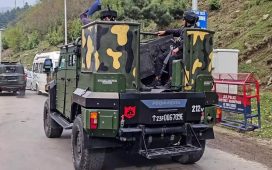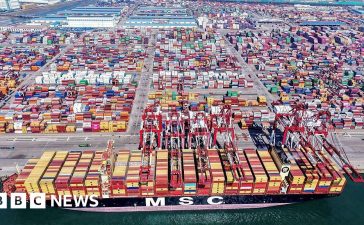
The summit is seeing off two Quad leaders – Joe Biden and Fumio Kishida. The next summit in India will see two new faces – and potential third, depending on how the Australian elections turn out. It was Donald Trump who started the Quad foreign ministers’ meetings, and Biden who elevated the Quad to the summit level. It’s the 6th Quad summit, fourth in person, since 2021.
Foreign ministers have met eight times since 2019. In these six years, leaders have changed in Australia, Japan and the US. The Quad’s baby steps have resulted in whole-of-government strategic alignment that has gone a long way to election-proof this grouping and bringing four very different countries on the same page. There are no more questions on who’s the ‘weak link’ in the Quad.
Three developments in Quadsphere give an indication of the future of geopolitics and strategy.
Maritime security Condemnation of ‘militarisation of disputed features, and coercive and intimidating manoeuvres in the South China Sea‘ using ‘coast guard and maritime militia vessels’ now has boats on the water. A new joint initiative of the four coast guards – look at it as Malabar-lite – will patrol these waters together from 2025 as a deterrent action. A new Quad Ports initiative will open investment in port infrastructure in the IP region, while a Quad logistics network will share airlift capacities among the four countries, call it ‘dual-use partnerships’, depending on the turn of a screw.
That China is a key focus of the Quad was clear from Biden’s hot mic – ‘[Xi Jinping is] looking to buy himself some diplomatic space, in my view, to aggressively pursue China’s interest…. [China continues to] behave aggressively, testing us all across the region on several fronts, including on economic and technology issues.’The Philippines is an interesting case. The Quad clarified that the 2016 UNCLOS judgment should be the basis of resolving disputes – that had endorsed the Philippines stand on the South China Sea dispute. It’s big because China rejected the judgment as a member of UNCLOS, while the US accepted it despite not being a member.As ground zero of active contestation with China, the Quad has quietly stepped up in support of Manila in recent months. India sold its first set of Brahmos missiles to the Philippines. The US has stepped up export of Tomahawk missile launchers and $500 mn in defence funding, Australia has sent military forces, and Japan signed a treaty with the Philippines to supply fighter jets and naval ships.
The security Quad is at work, although slowly. Equally significant, Quad’s outgrowing Asean – inevitable, perhaps. This year’s statement has downplayed the ‘centrality’ of Asean.
Underwater operations Quad is harmonising its subsea cable networks and, as in 5G, building China-proof connect networks. An essential element of modern geopolitics is that tech choices determine geopolitical choices. It’s literally what connects the world, and, increasingly, what will divide it, a ‘splinternet’ in real time. These choices will have profound implications for future of politics, technology and our ways of life.
Western companies, which lay the bulk of subsea cables, will largely bypass China from 2025. India has huge interest in this sector. From 2025, India will quadruple its capacity by launching three new cables – 2Africa Pearls, India-Asia-Xpress (IAX), and India-Europe-Xpress (IEX), with Airtel and Reliance joining Amazon, Google and Meta as big international players. Last week, the US cautioned Vietnam against using Chinese companies like HMN to replace their undersea cables. In a few years, the world can look forward to ‘splinternet’ in real time.
American/can’t Despite Aukus and the treaty ties between the other three, one thing is clear – the strength of Quad will depend on the strength of the India-US relationship. Nothing exemplifies the strength of this more than the first national security semiconductor fab in India that’ll build chips for US and Indian militaries. The objective – to manufacture ‘an infrared, gallium nitride and silicon carbide semiconductor’, jointly by a ‘strategic technology partnership between Bharat Semiconductor, 3rdiTech, and Space Force’. It’ll be an Indian startup, and the Indian and US governments working together. The potential is huge.
India signed on to the IPEF overarching agreement and two pillars of clean economy and fair economy. The trade pillar is a bridge too far for all concerned just yet. An India-US initiative in the Indian Ocean would involve security partnership, critical minerals, deep seabed mining, partnering Eastern Africa, deterring China in Djibouti and a host of challenges.
As a White House official put it, ‘I think the best encapsulation of the way we think about India’s role is captured in our Indo-Pacific strategy, where we say that the US seeks an India that is increasingly a leader in the region and increasingly a partner with the US.’ India is much less articulate about how it sees its own future.
It’s beginning to take ownership of the Quad. It’s being forced to make geopolitical choices. That’s a paradigm shift in New Delhi’s world view.
The writer is CEO, Ananta Aspen Centre









